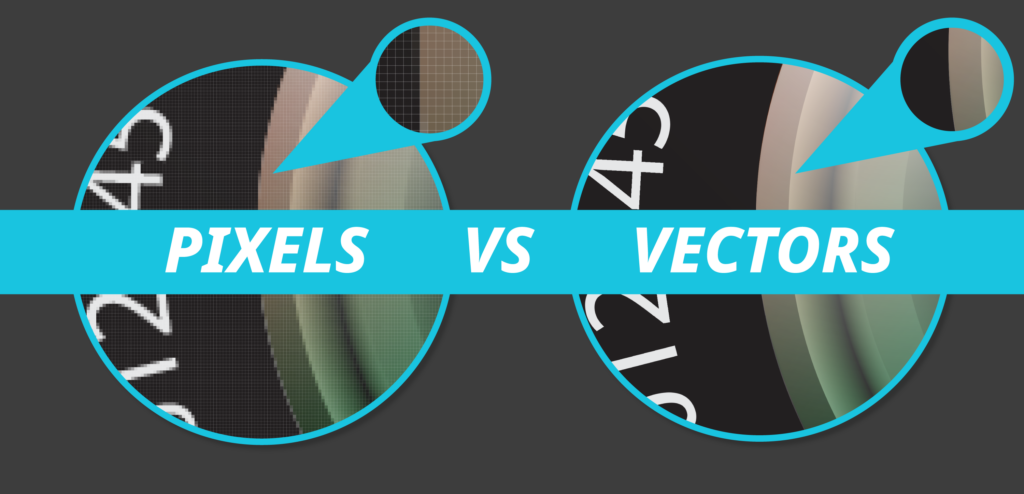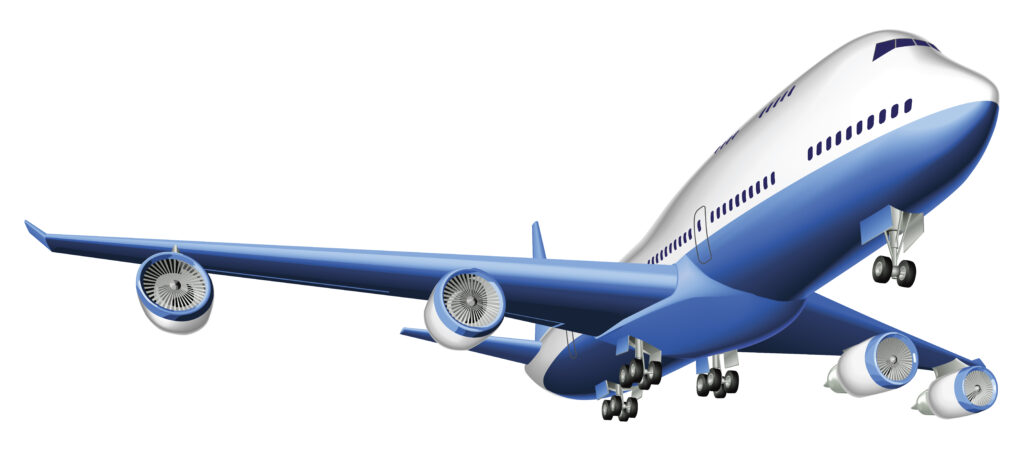
Navigating the world of digital images and which file format would fit which job is an area many of my customers get confused about. As designers, we forget it’s a language not everybody understands, and simply giving an image the correct file extension (.jpg for example) will not suddenly make everything clear and easy to understand.
This blog will explain, in a simple way, the differences between pixels and vectors, which to use, and when.
Pixelated Images

Let’s start with pixel-based images, these are images that have been created by camera or scanner and maybe have the file extensions .jpg, .png, .gif, .bmp after the file name. These types of images could also be created in a computer program like Photoshop, Elements, Pixel Art, etc. Look very closely at these images, zoom in, and you will see tiny squares of colour, a little like a mosaic – these are the pixels.
The squares are measured in square inches, so for instance, if you have an image that is 300dpi it means 300 dots (pixel squares) per inch. If you want to enlarge this image to fit into a larger product, the little individual squares will grow, and this will make your image look blurred, fuzzy, and lacking in definition once you increase the image size. Trying to add more pixels per inch won’t help, as they will be added randomly and won’t produce good results.
Low resolution images 72-150 dpi are used on digital platforms as they don’t need to be large and are quicker to render (show properly) on screen.
High resolution images are 300dpi and higher, these are needed for print to ensure they are not blurred. The higher the dpi the sharper the image, especially if enlarged.
Vector Images

Vector images are files created in programs such as Illustrator, CAD, CorelDRAW and mainly have .pdf, .eps, .svg after the file name.
These images have been created by creating shapes and outlines, they are not made up of pixels, and do not rely on resolution as they are based on mathematical equations from one point to another forming lines and shapes.
You can edit colour, shapes, text layout etc. giving greater flexibility for images that need to change regularly for your brand or documents. This is why a vector image is best used for logos, illustrations, graphics, icons, and infographics.
These files can be scaled up to whatever size you need and never lose any quality, no matter the size you need they will always look the same – from the size of business card to the size of a house.
These types of images are best applied to anything you are going to have printed, business cards, leaflets, clothing, signs, banners, brochures etc.
Where to use them.
Most printers or designers will ask for a .pdf or .eps format of your logo if they are using them in any design-work they are creating for you. This is because they can be changed into whatever format is needed. They are the most flexible file types because you cannot easily create a vector based image from a .jpg, .png or any other pixel file. There is a way designers can convert an image, but it is never a good quality conversion.
A designer may ask for a .jpg or a .png file and there is a difference in those two file types. A .jpg file will have a white solid background, whereas a .png file will have a transparent background. For example if you don’t have the logo in .pdf format but want your logo to be over the top of an image, or a different colour background on your website or social media, then a .png file is the best file to use
In conclusion
As you can see, in the context of graphic design at least, size really does matter! If you don’t use the right file for the right job, it will really affect the quality of the marketing materials that your customers will see. This in turn will reflect on the customer perception of the quality of your product or service before they even have a conversation with you. Take pride in the way things look, as it will pay off.
Hopefully this brief explanation of the minefield of filenames and their uses hasn’t blown your brain but has given you the insight to help you with being consistent with your brand.
Of course if you are truly stuck and have not got the right file format you can always get in touch with me, or any other designer or printer, and we will gladly help you out or explain a little further.
Below I have put together a handy table that might go a long way to helping you send the right file to the right job.
